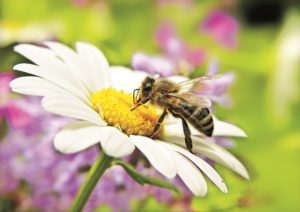
March officially kicks off the spring season, and we are more than happy to welcome longer, sunnier, and warmer days, as well as all of the beautiful blossoms and fresh produce that the new season brings. And what luck that the first day of spring coincides with National Agriculture Week (or perhaps some really well-thought-out planning). Of course, we can’t think of agriculture without thinking of all of the farmers and ranchers who have decided to farm and ranch to provide a variety of foods for the rest of us to enjoy, so we want to send a special “Thank You” to all who have heeded the call.
But what about National Agriculture Week – what is its history and purpose? According to AgDay.org, the National Ag Day program was launched in 1973 by the newly formed Agriculture Council of America (created in the same year). As for its purpose, the American Presidency Project, Proclamation 10158—National Agriculture Day, 2021 states:
“On National Agriculture Day, we recognize the unique and irreplaceable value that farmers, ranchers, foresters, farmworkers, and other agricultural stewards have contributed to our Nation's past and present. America's agriculture sector safeguards our Nation's lands through sustainable management; ensures the health and safety of animals, plants, and people; provides a safe and abundant food supply; and facilitates opportunities for prosperity and economic development in rural America.”
Source: Census.gov
Now, when you think of farming and ranching, you may think about the vast fields of the Midwest or the South, but some of the top-producing agriculture states are actually among some of the most populated. Here are the top 10 (in terms of cash receipts in 2021), in descending order, according to the Economic Research Service of the U.S. Department of Agriculture:
- California
- Iowa
- Nebraska
- Texas
- Minnesota
- Illinois
- Kansas
- Indiana
- North Carolina
- Wisconsin
Of course, we can’t talk about agriculture without mentioning the impact that honey bees have on the industry. Considered premier pollinators, honey bees are available throughout the growing season and pollinate a wide range of crops. In fact, honey bees pollinate more than 90 different crops and are responsible for about one-third of the foods we eat. It is thanks to them that we can enjoy Mother Nature’s sweetener and feed communities with nutritious crops like fruits, vegetables and nuts. Not to mention meat and dairy, which depend on bees to pollinate livestock feed crops, like alfalfa. You can learn more about this pollination work in this Celebrating Beekeeping video:
In honor of the new season, the return of our pollinators, and ultimately all of the tasty fresh produce hitting store shelves, we’re sharing some of our favorite ways to celebrate all things spring!
Visit the Honey Bee-stro
That’s right - the National Honey Board is proud to announce that the Honey Bee-stro is returning to the EPCOT® International Flower & Garden Festival! Featuring delicious honey-inspired food and beverages, along with new honey and bee information, the NHB’s partnership with Disney is the perfect pairing of storytelling and education that brings the magical story of honey and honey bees to life.
Plant for Pollinators
This is the time of year we get to see the return of our favorite pollinators in gardens and parks around the country, but in order to continue enjoying the fruits of their labors (see what we did there...?), we need to make sure we protect and help these pollinators, and we've got five easy ways to do just that, but today we are talking specifically about planting pollinator-friendly gardens.
Just like us, it is important that pollinators have access to a varied diet of plants, pollen, and nectar. By planting a variety of flowering plants, you help our pollinators stay healthy and strong, but just as every ecosystem is different, so are the native plants that populate them. Here you will find eight different regions of the U.S. and the best pollinator-friendly plants to populate your garden.
Create a Bee Bath
This is a great activity that the whole family can enjoy, our favorite flying friends will greatly appreciate, and it is so easy! Simply fill a shallow bowl with water and some stones (let the kids personalize them with a little paint) and corks for the bees to land on. Fill your bath with fresh water every couple of days and just see how many pollinators come to visit.
Host a Honey Tasting
With more than 3,000 varietals found worldwide, a honey tasting is a fun and delicious way to explore the world. From floral to fruity, and even spicy, tasting different varietals is an experience all its own. Learn more about honey varietals here. So grab a few varietals and some tasting spoons and dig in!
Enjoy the Fruits (and Veggies) of Honey Bees’ Labor
While we do enjoy the blooming flowers that make spring look and smell so beautiful, it's really the delicious fresh foods that spring brings that has us excited about the season. To celebrate all the tasty fresh fruits and veggies that are going to hit our grocery shelves in the coming weeks and months, here are 12 of our favorite honey-inspired recipes that are sure to get you in the spirit for spring.
But we want to hear from you! What are you most excited about in the new season, and how do you celebrate the return of spring? Tell us all about it in the comments section below!